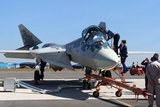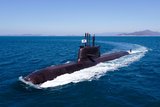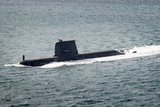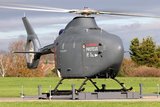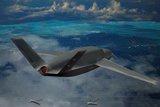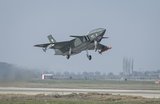Should the US be concerned about the state of its nuclear arsenal?
A test of an unarmed Minuteman III at Vandenberg Air Force Base. (Photo: US Air Force)
The Pentagon has been struggling to ensure the readiness of its nuclear capabilities, according to a former commander of US Strategic Command (USSTRATCOM). Long-lasting issues involving budget, bureaucracy, complexity of the systems and low levels of flexibility of an ageing arsenal have been playing a relevant role in putting the US in what Gen (ret.) C. Robert Kehler, former commander of USSTRATCOM, considers an alarming situation.
Designed and built in the Cold War era, Washington’s systems have been in service for more than five decades. Although they have passed through life extension, these platforms feature an old architecture that hampers efforts to
Already have an account? Log in
Want to keep reading this article?
More from Air Warfare
-
![Leonardo’s Proteus concludes ground tests with maiden flight on horizon]()
Leonardo’s Proteus concludes ground tests with maiden flight on horizon
The technology demonstrator forms part of a wider effort to help the Royal Navy explore the potential of uncrewed systems supporting its existing crewed aviation platforms.
-
![Airbus MQ-72C Lakota Connector progress on track ahead of pending USMC decision]()
Airbus MQ-72C Lakota Connector progress on track ahead of pending USMC decision
The MQ-7C uncrewed aircraft is currently undergoing further internal flight tests ahead of a government test event anticipated for next year.
-
![November Drone Digest: GA-ASI eyes Middle East for Gambit, Edge Group unveils new UAVs]()
November Drone Digest: GA-ASI eyes Middle East for Gambit, Edge Group unveils new UAVs
In November 2025, GA-ASI unveiled a new Gambit variant, the Gambit 6, and appears to be pitching the aircraft series to various customers in the Middle East, which is a fast-emerging CCA market. The Dubai Airshow also saw the unveiling of various Emirati aircraft from Edge Group.
-
![Baykar’s Kizilelma drone makes progress with first air-to-air kill]()
Baykar’s Kizilelma drone makes progress with first air-to-air kill
This test is the latest milestone achieved by the indigenous drone, destroying a target using a beyond-visual-range missile.
-
![Lockheed plans further solid rocket motor investment in Europe and Middle East]()
Lockheed plans further solid rocket motor investment in Europe and Middle East
The company has worked to heavily invest in its solid rocket motor production capabilities, both in the US and internationally, to build a strong supply chain to meet growing demand.








